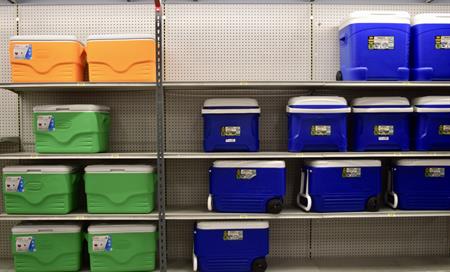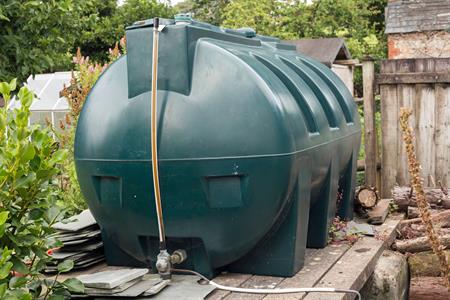7 Frequently Asked Questions about Rotational Molding
 If you are in the industrial molding world and are curious about incorporating rotational molding into your processes, this article is for you! From learning how the rotational process works to its benefits and uses, you’ll see why many industries turn to rotational molding for hollow objects. However, there is a time and cost factor associated with rotational molds, and you may worry that the process is too complex for you to invest in this type of molding.
If you are in the industrial molding world and are curious about incorporating rotational molding into your processes, this article is for you! From learning how the rotational process works to its benefits and uses, you’ll see why many industries turn to rotational molding for hollow objects. However, there is a time and cost factor associated with rotational molds, and you may worry that the process is too complex for you to invest in this type of molding.
This blog post will cover everything you need to know about rotational molding, from better understanding how it works to why it's an efficient option for producing plastic parts on various scales. Then you can better decide whether this molding operation is right for you. And if you’re ready to leap into rotationally molded products, we have experts standing by to help you make the molding process easier.
1. What Is the Rotational Molding Process?
Rotational molding is an efficient and cost-effective industrial process for creating hollow products. This molding process is sometimes called rotomolding, rotomold, or rotocasting. The molding process takes place in five steps:
- A hollow mold cavity is prepared with a mold release agent and then filled with powdered plastic resin.
- A carousel-like machine rotates the mold horizontally and vertically as it is heated in an oven to melt the resin.
- The horizontal and vertical rotations distribute and fuses the melted material onto the inner surfaces of the mold.
- The mold is removed from the oven and cooled until the resin hardens into the desired shape.
- The rotation stops, and the mold opens to remove the finished part.
The result of the process is a solid material with uniform wall thickness that takes on the desired shape of the hollow mold from which it was created. No size limitations make it the ideal process for various parts. The main difference between rotational molding and other molding types, like blow molding or thermoforming, is that the plastic resin melts onto the mold cavity walls rather than being forced there by pressure.
2. What Are the Benefits of Rotational Molding?
Rotational molding is used for creating hollow parts out of various plastic materials. This process has existed since the early 20th century and offers many advantages compared to other manufacturing processes. For example:
- Versatility: The mold can be made in nearly any size and shape and accommodate details such as specific textures, logos, symbols, and letters. Use the right mold release agent to ensure a finished product free from defects.
- Cost Effectiveness: Rotomolding tooling can be made from low-cost metals such as aluminum. Plus, our mold cleaners can help extend the life of your tooling.
- Finished Appearance: This unique casting process produces high-quality parts free of blemishes or other imperfections. A clean mold will produce better-looking parts, so be sure you use the faster and safer way to clean rotational molds.
- Consistent Wall Thickness: Manufacturers can use various types of machines to ensure that the walls of their rotomolded parts have uniform wall thickness throughout the entire product.
- Durability: Because the parts are molded in one piece, there is no need for welding or joint fabrication to join two parts together, which can create weak spots.
- High Stability: No pressure is used in this molding process, eliminating the risk of defects in the finished parts and increasing its stability.
- Strength: The rotational molding process creates thick corners, reducing the possibility of failure in these stress-concentrated points.
Shop For Mold Releases & Cleaners For Rotational Molding
3. What Is Rotational Molding Used For?
 Rotational molding can produce one-piece hollow objects and double-walled open containers with a much thicker wall than could be achieved using other techniques. Some common items created using rotational molding include:
Rotational molding can produce one-piece hollow objects and double-walled open containers with a much thicker wall than could be achieved using other techniques. Some common items created using rotational molding include:
- Tanks
- Kayaks
- Coolers
- Toys, such as ping-pong balls
- Fuel Tanks
- Watercraft
- Bins & Containers
- Automotive parts like cup holders
- Road cones and barriers
- Store mannequins
This unique molding process allows custom features to be incorporated into the mold, such as inserts and spin weld attachments. It provides thermal insulation and stiffness through foaming techniques without creating pinch-off seams or weld lines. Therefore, the finished product requires no secondary processes.
4. What Materials Are Used for Rotational Molding?
Rotational molding involves a unique process of combining heat and biaxial rotation to produce hollow parts. Made from plastic, the most commonly used materials for rotomolded parts are high- and low-density polyethylene.
This thermoplastic is a popular choice as it’s economical yet incredibly durable. Its flexibility allows for design versatility, so it can rapidly create intricate shapes. Its lightweight features add an extra layer of practicality in that it is easy to transport and ideal for environmentally friendly packaging solutions without compromising quality.
Other materials commonly used in rotational molding include:
- Cross-linking polyethylene (XLPE)
- EVA copolymer
- Nylon
- Polycarbonate
- Polypropylene
- Rigid polyvinyl chloride
5. Are There Different Types of Rotomolding Equipment?
There are a few different rotational molding machines. Each one differs in the way they rotate the mold throughout the process. Machine types include clamshell, rock and roll, vertical, up and over, shuttle, and swing arm machines. Depending on the needs of a particular project, there can be as many as four arms around the mold to ensure an optimal cooling rate.
Rotomolding machines are distinct from other molding forms, such as blow or injection molding, and require special equipment. The most important aspects of the equipment involve keeping and maintaining the plastic's flow characteristics and regulating the heat so it can form a hollow mold that is then cooled within separate chambers. Use our rotational molding process aids, such as TraSys 4000 RotoFlow, to help flow resin into hard-to-reach areas.
6. Are There Any Disadvantages?
Compared to other industrial molding processes, rotational molding offers some distinct advantages. However, as with many things in life, there are potential drawbacks to consider. Some of these disadvantages include the following:
- Longer Process Times: The process cycle times take a long time for the entire mold-making process to complete.
- Material Limitations: This process is best suited for creating hollow parts and is not applicable when attempting to manufacture solid objects. You will also only be able to use poly-based resins that can be converted into a fine powder with high thermal stability. These materials also tend to be more expensive.
- Low Repeatability: While the tooling to create the molds for rotational molding is inexpensive, it’s often a soft metal that requires refurbishment or replacement after about 3,000 cycles.
- Labor Intensive: It has yet to be determined how to best automate the rotational molding production process, so it requires a lot of labor compared to other molding methods.
Despite these potential drawbacks, rotational molding has been increasingly adopted over the years due to its distinct advantages over other industrial processes.
7. What’s the Difference Between Rotational and Injection Molding?
While rotational and injection molding can be used to produce virtually any type of plastic part, their production methods and advantages and disadvantages differ significantly.
Injection molding involves injecting molten material into a steel or aluminum cavity, which is then cooled in the shape of the part. Rotational molding is different because resin powder is placed in a mold with two halves connected. The mold is rotated slowly with heat being applied from the outside as well as an internal source of heat.
This helps form the part’s walls evenly as it produces hollow products with even wall thicknesses. Ultimately, all types of plastic forming techniques have something to offer industries such as automotive, construction, consumer goods, and packaging. It depends on the most important design criteria when choosing your method.
Need Products to Make Your Rotational Molding Process Easier?
Rotational molding is an amazing process with a lot of advantages. It's efficient, sustainable, and cost-effective compared to other manufacturing methods. Now that you know about the rotational molding process and its uses, it's easy to see why it has become so popular in many industrial sectors.
Rotational molding can be used for small-volume production runs and large-scale operations. Various materials can be used with the rotational molding process, allowing manufacturers great flexibility when choosing the right material for their products. The method also offers several options when it comes to design capabilities.
Finally, an important difference between rotomolding and injection molding should be noted. Injection molding is more detailed than rotomolding when making parts or components, making the latter better suited for larger parts or items. If you're looking for partners for your next manufacturing project, trust Stoner Molding - leaders in mold release agents, sealers, and cleaner - because we have you covered! Talk to us now!
Resources:
- https://rotomoldusa.com/rotomold/
- https://geminigroup.net/blog/rotational-molding-advantages-disadvantages/
- https://www.sterlingrotationalmolding.com/rotational-molding/the-rotomold-process/
- https://www.dutchland.com/rotational-molding-for-beginners/
- https://rotodynamics.com/what-kinds-of-products-are-made-with-rotational-molding/
